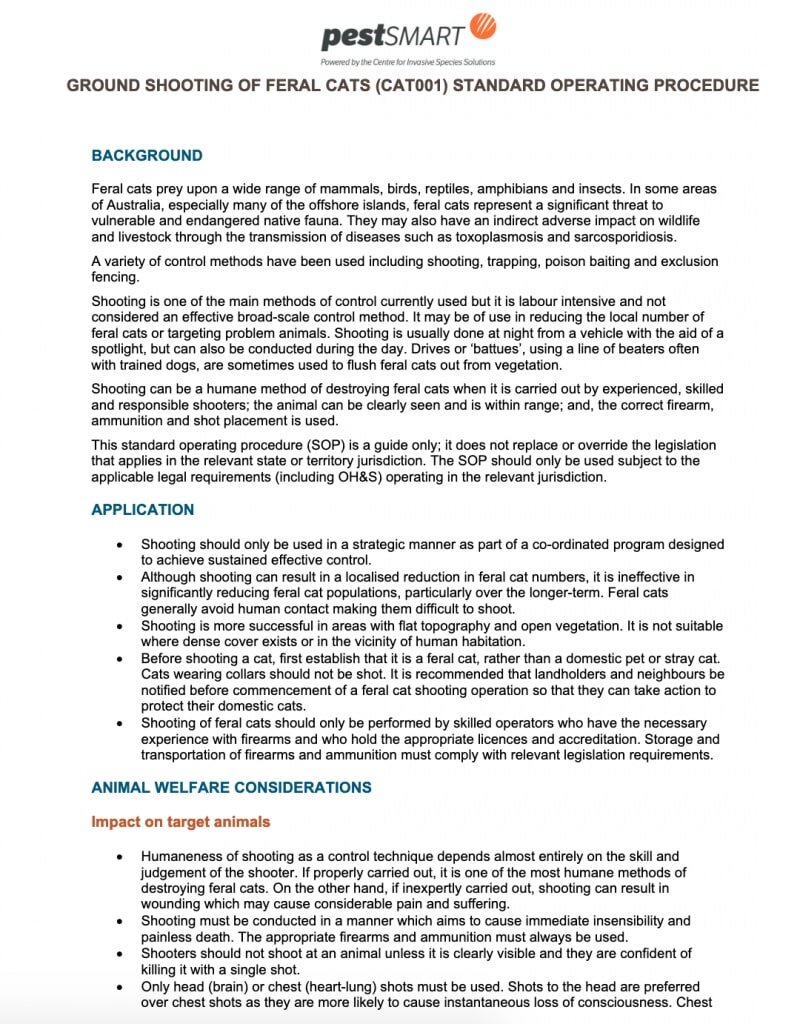STATEMENT
Coalition condemns community cat killing spree
This is our response and statement to the cat killing program carried out by contractors to the Port of Newcastle in December 2020.
Following revelations surrounding a recent “feral cat control” operation in Newcastle, a harbour city two hours outside Sydney, the Council responsible for sourcing the services of the inept contractors who left a shameful trail of blood and severely injured animals in their wake has faced heavy censure and condemnation. The public has joined concerned community members in the outcry and has secured an investigation into the actions of the contractors. Despite the shocking event not involving 1080, baiting as an alternative to bullets has been referred to across social media channels. We believe it is vital to provide a statement condemning the project and debunking the myths that make poisoning look like a kinder way to kill.
Our statement and response
The Coalition is a strong supporter of ethical wildlife management. Though our principal motivation is outlawing the use of 1080 poison in Australia, we are not silent in the face of severe, inexcusable and preventable cases of animal cruelty. This is especially so when the actions that cause cruelty to occur stem from the belief that because the targeted animals are considered unwanted, unwelcome or inconvenient, their suffering can be excused or covered up. The recent control program targeting “feral cats” in the NSW harbour city of Newcastle is one such example.
The truth is these free-living community cats have responsible and dedicated volunteer carers who regularly feed and monitor them. They have been desexed and microchipped and receive ongoing routine preventative vet care. They have a home and they are loved. The perpetrators of this unnecessary and abhorrent cruelty, including the contractors and the Port of Newcastle itself, must face charges and prosecution. With the majority of the public, we believe the RSPCA must ensure that this happens.
A survivor of the recent Council cat control program. Source: Newcastle Herald.
The Coalition will be lodging a formal complaint with the relevant authorities and we will be demanding new enforceable regulations are enacted to manage and oversee all activities conducted by pest controllers. These must be implemented by government agencies under the auspices of an Independent Office of Animal Welfare or Protection.
Across Australia, many millions of animals are killed in government and private control programs every year. The true number is unknown because no records of this kind are kept. In recent years, cats have become public enemy number one. Much of this is based on the belief that they exist almost everywhere. The principal reason they are increasingly targeted is based on their allegedly devastating impacts on native wildlife, despite serious doubts about the true nature and scale of their presence across the mainland. Recent studies have found early estimates to be "off by millions". So, are they eating us out of house and home – or have they simply become the new pariah down under?
Enter lethal control.
The Standard Operating Procedure for the killing of cats with firearms admits that “it is ineffective in significantly reducing” cat population levels and it is generally difficult to achieve good results. It advises that shooting cats is “not suitable” in urban areas and “should only be performed by skilled operators”. This is because the outcomes depend “almost entirely on the skill and judgement of the shooter”.
The Standard Operating Procedure for the ground shooting of cats.
Though shooting is considered preferable by some to other lethal control techniques, it is capable of producing significant suffering. The Standard Operating Procedure states that if it is improperly carried out “shooting can result in wounding which may cause considerable pain and suffering“. It is without serious doubt that this has been the case in the soon-to-be notorious Newcastle program. It may become as significant as the infamous shooting of brumbies in the Guy Fawkes River National Park fiasco of October 2000.
But don’t take our word for it. Here’s an excerpt from a scientist whose role was observing animals endure the death throes of 1080. This particular animal was a wild-caught cat, not unlike those some are suggesting be poisoned with 1080 rather than shotguns:
‘Look,’ I said and pricked the cat’s leg with the probe once again, ‘it responds to painful stimuli’, and on cue the cat twisted about and pawed unsteadily at the place where it had felt the pinprick. It fell once again upon its side and convulsed in turgid spasms and then stiffened, relaxed then stiffened again as it slowly rolled onto its back and cried until too paralysed to vocalise.
- Dr. Clive Marks
Animals killed by 1080 do not simply “go to sleep”, like some Australian researchers have claimed. They remain aware and conscious throughout their ordeal. This is one reason we believe 1080 poisoning constitutes torture and, therefore, animal cruelty. This is backed by experts, including the RSPCA, whose affiliated scientists have published peer-reviewed papers concluding that 1080 cannot be considered a “humane” poison.
This is what the eye-witness had to say:
This should not happen. Reams had been written and careers built upon fragile facts. According to the government websites carnivores do not suffer when they are poisoned with 1080. Yet, in truth, very few had seen the outcomes of using this poison on cats. We all knew that this was because no one really wanted to see.
- Dr. Clive Marks
This is what one comment had to say about the Newcastle cat cull:
A comment on a social media video posted by NBN Television. Source: Facebook.
Australians have been hoodwinked into believing the myths peddled about 1080 poison. Some have been so conned that they believe it’s better than a bullet aimed at the brain or the heart – even if the target represents something smaller than the size of a small fruit. The same Standard described above states that “shots to the head are preferred“, despite the target being approximately the size of a golfball. It is clear from the tragic outcome on the Port of Newcastle that the contractors were inept and were no William Tell’s of their industry.
The relative size of a cat's brain compared to other mammals.
Why we need humane alternatives, not alternative kinds of killing
Though we understand the perceived need to manage the presence of some species, we do not and cannot accept the manner by which the Port of Newcastle attempted to conduct the recent cat control operation. We strongly support the seven principles of ethical wildlife management. These principles are set out by the Canadian equivalent of the Australian RSPCA in the infographic below. Though RSPCA Australia have a section on their website based on these principles, it does not have any published policies which advocate they be followed. Click the image for a link to the peer-reviewed article it is informed by.
The 7 principles of ethical wildlife management. Source: British Columbia SPCA.
It is clear that the Port of Newcastle and the contractors they sourced for the program failed to consider many of these important principles. Most obviously, it distinctly failed to pass the social acceptability test and neglected to conduct any investigations into alternatives that would prioritise animal welfare.
These clear and concise principles are both groundbreaking and common sense. If adopted, the framework they would introduce has “the potential to revolutionise how we see and enact wildlife control“. Right now, the burden of proof sits heavily on unverified claims rarely – if ever – supported by community values and sound science. Killing unwanted animals has not solved the problem. Australia has been using poison to control unwanted wildlife for over 50 years, yet policy-makers continue to throw more funding at techniques that have failed to secure any kind of lasting solution.
Killing has become a knee-jerk response. It is often used despite evidence suggesting it is ineffective and counterproductive. Some lethal control programs have led to increased problems rather than solutions. Following the principles of ethical wildlife control, we promote the study and trialling of proven non-lethal techniques. In this case, we believe that Trap-Neuter-Release (‘TNR’) should be trialled by the Port of Newcastle. This technique, though criticised for a range of reasons, has proven effective and has been described as “consistent with current global best practice for humane and ethical management“.
Links and ways to act
Read ‘Killing Shrödinger’s feral cat’ by Dr. Clive Marks.
Watch the video of Dr John Read comparing cats dying of 1080 or PAPP poisoning to “quietly falling asleep” below.
For more information on TNR, read the RSPCA’s review here.
Join us in demanding authorities take strong action against the perpetrators of this egregious case of animal cruelty by writing to RSPCA NSW’s Chief Inspector at Smeyers@rspcansw.org.au.





